
How to Use Sensor Arus (ACS712-30A): Examples, Pinouts, and Specs
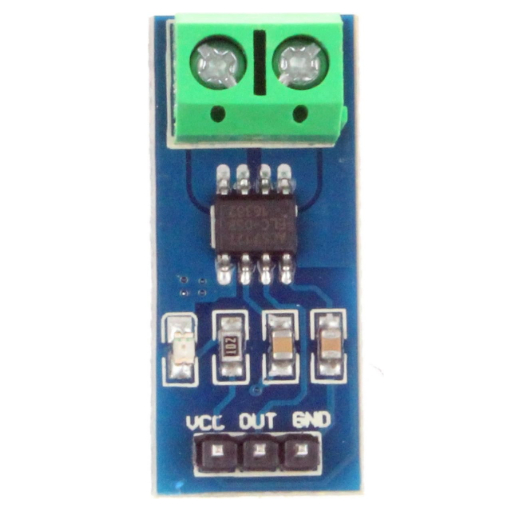
 Design with Sensor Arus (ACS712-30A) in Cirkit Designer
Design with Sensor Arus (ACS712-30A) in Cirkit DesignerIntroduction
The ACS712-30A is a Hall effect-based linear current sensor designed to measure both AC and DC currents up to ±30A. It outputs an analog voltage proportional to the current flowing through the conductor, enabling precise current monitoring. The sensor is compact, easy to use, and widely employed in power monitoring, motor control, and overcurrent protection systems.
Explore Projects Built with Sensor Arus (ACS712-30A)
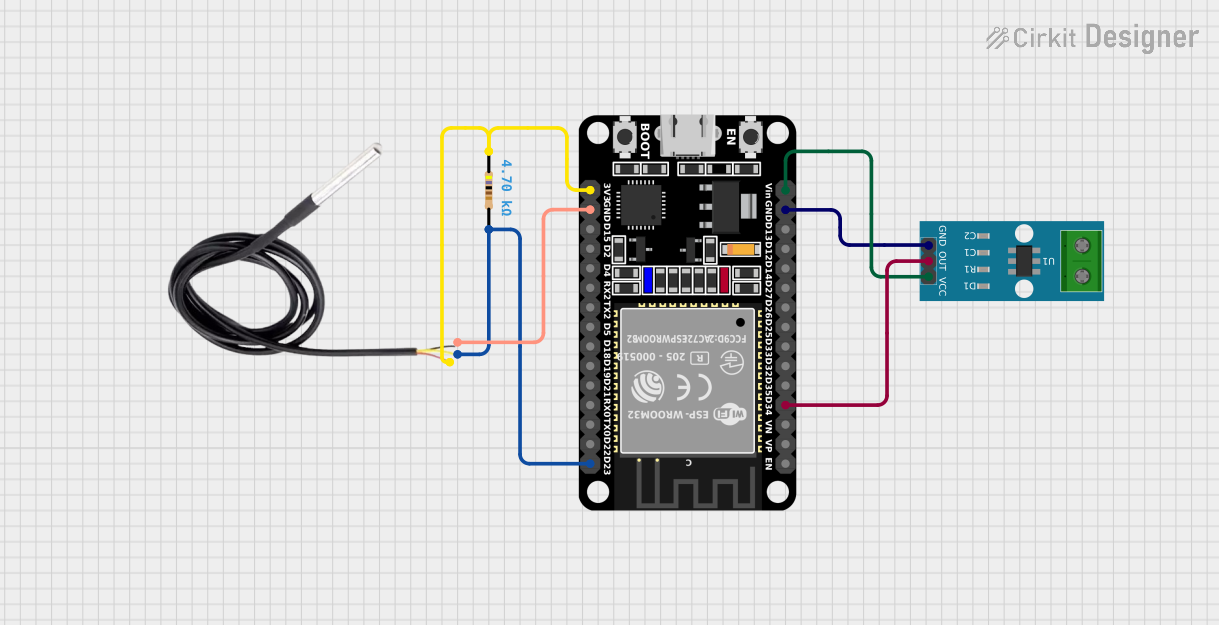
 Open Project in Cirkit Designer
Open Project in Cirkit Designer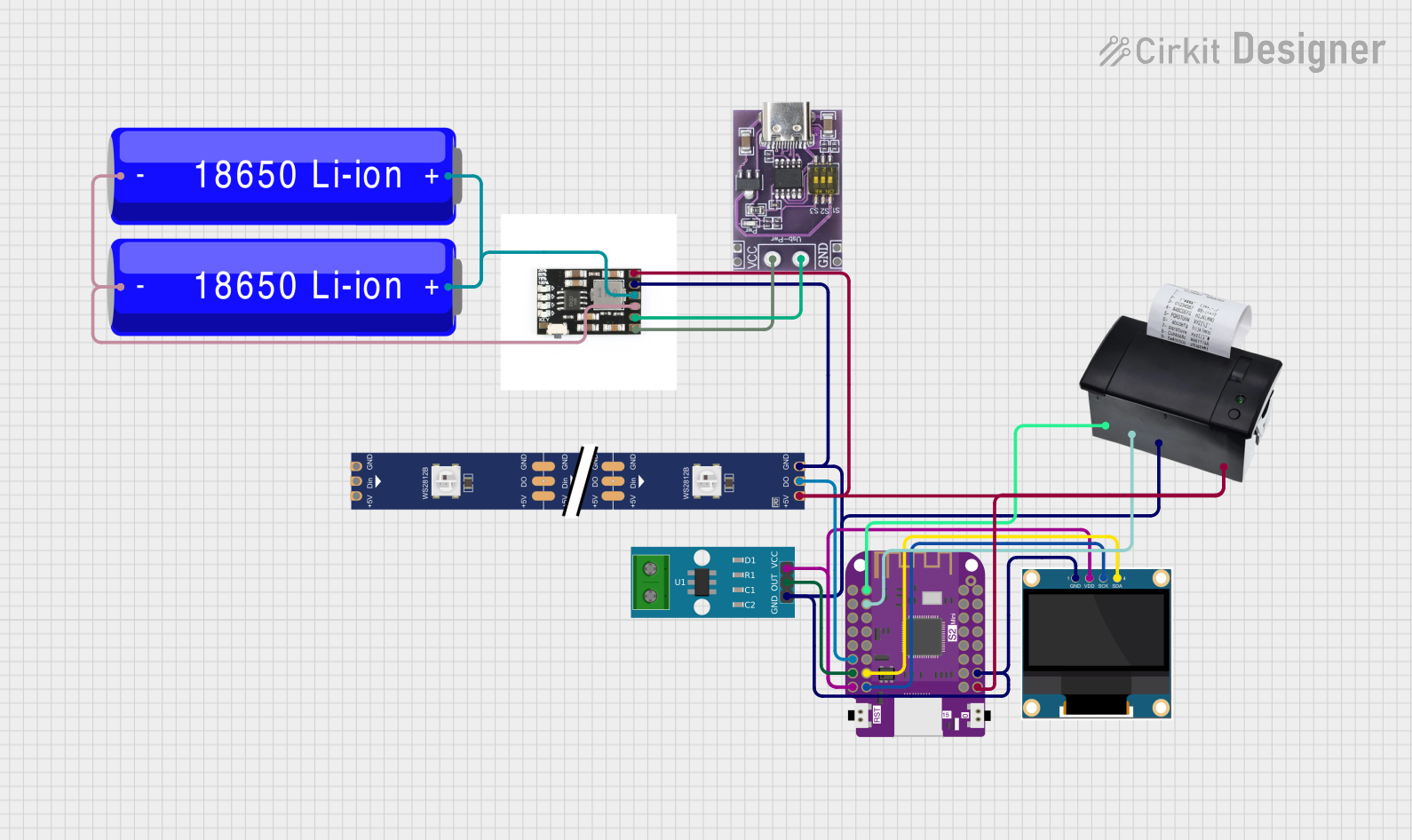
 Open Project in Cirkit Designer
Open Project in Cirkit Designer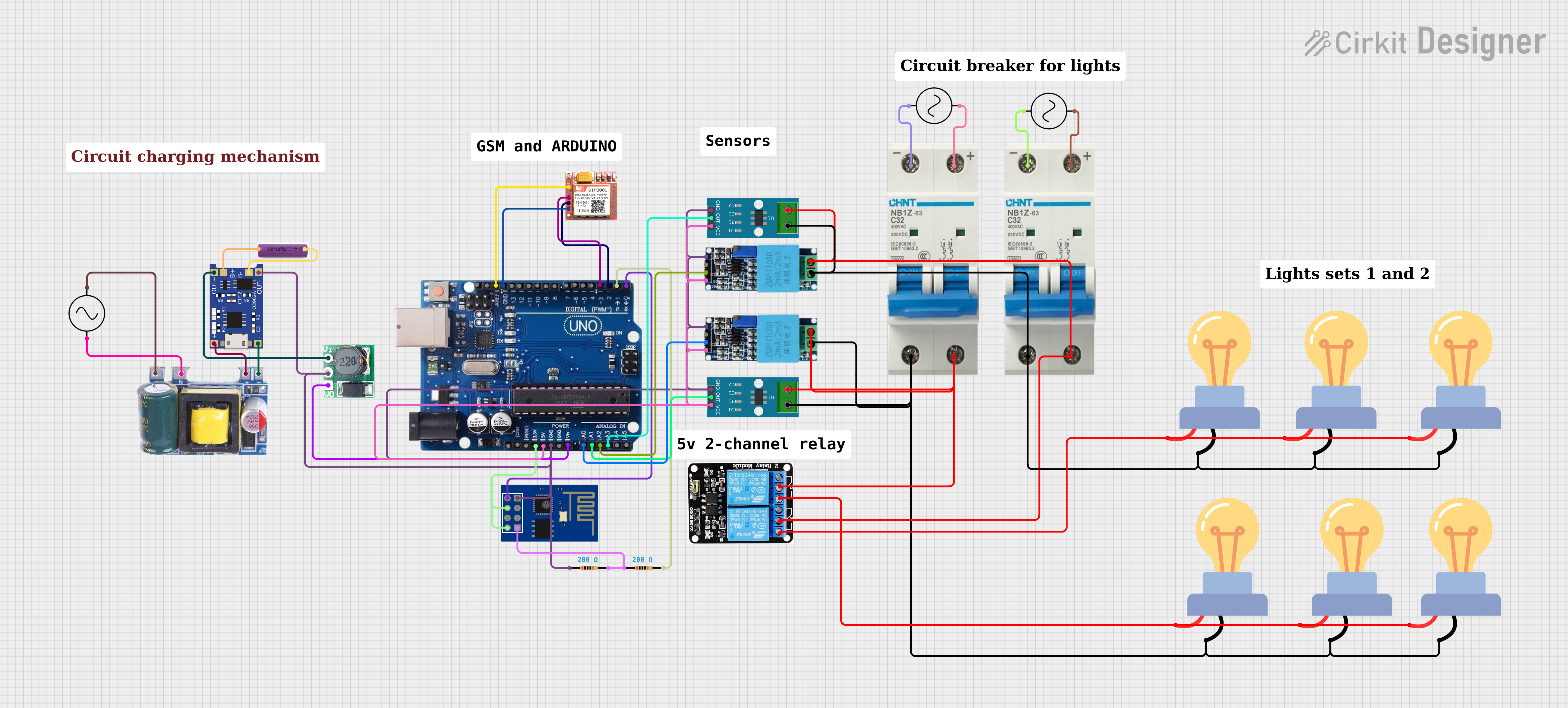
 Open Project in Cirkit Designer
Open Project in Cirkit Designer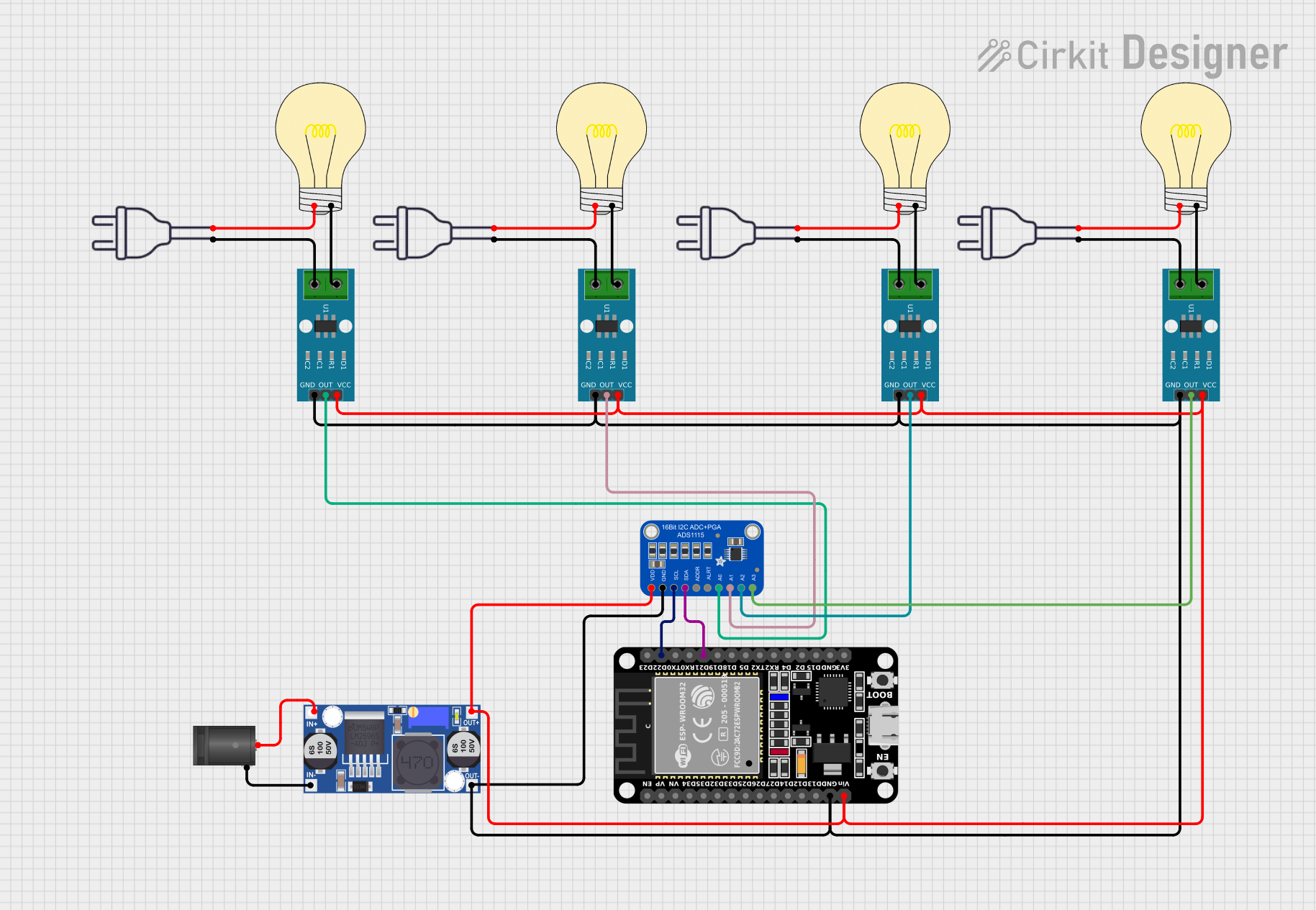
 Open Project in Cirkit Designer
Open Project in Cirkit DesignerExplore Projects Built with Sensor Arus (ACS712-30A)

 Open Project in Cirkit Designer
Open Project in Cirkit Designer
 Open Project in Cirkit Designer
Open Project in Cirkit Designer
 Open Project in Cirkit Designer
Open Project in Cirkit Designer
 Open Project in Cirkit Designer
Open Project in Cirkit DesignerCommon Applications
- Power consumption monitoring in appliances
- Battery management systems
- Motor current sensing
- Overcurrent protection in circuits
- Renewable energy systems (e.g., solar inverters)
Technical Specifications
Below are the key technical details of the ACS712-30A sensor:
| Parameter | Value |
|---|---|
| Supply Voltage (Vcc) | 4.5V to 5.5V |
| Current Measurement Range | ±30A |
| Sensitivity | 66mV/A |
| Output Voltage at 0A | Vcc/2 (typically 2.5V at 5V Vcc) |
| Response Time | 5 µs |
| Bandwidth | 80 kHz |
| Operating Temperature | -40°C to 85°C |
| Dimensions | 31mm x 13mm x 15mm |
Pin Configuration and Descriptions
The ACS712-30A module typically has three pins for interfacing:
| Pin | Name | Description |
|---|---|---|
| 1 | Vcc | Power supply input (4.5V to 5.5V) |
| 2 | Out | Analog voltage output proportional to the current |
| 3 | GND | Ground connection |
Usage Instructions
How to Use the ACS712-30A in a Circuit
- Power the Sensor: Connect the
Vccpin to a 5V power supply and theGNDpin to the ground. - Connect the Load: Pass the conductor carrying the current to be measured through the sensor's onboard current path (IP+ and IP- terminals).
- Read the Output: The
Outpin provides an analog voltage proportional to the current. At 0A, the output voltage is approximately 2.5V (assuming a 5V supply). The voltage increases or decreases linearly with positive or negative currents, respectively.
Important Considerations
- Calibration: The sensor's output may vary slightly due to manufacturing tolerances. Calibrate the sensor in your application for accurate measurements.
- Noise Filtering: Add a capacitor (e.g., 0.1µF) between the
Outpin andGNDto reduce noise in the output signal. - Current Path: Ensure the current-carrying conductor is securely connected to the IP+ and IP- terminals for accurate readings.
- Avoid Overcurrent: Do not exceed the ±30A current rating to prevent damage to the sensor.
Example: Using ACS712-30A with Arduino UNO
Below is an example code to read current values using the ACS712-30A sensor and an Arduino UNO:
// Include necessary libraries (if any)
// Define the analog pin connected to the ACS712 output
const int sensorPin = A0;
// Define the sensitivity of the ACS712-30A (66mV per Amp)
const float sensitivity = 0.066; // 66mV/A
// Define the supply voltage (Vcc) and zero-current voltage
const float Vcc = 5.0; // Supply voltage in volts
const float zeroCurrentVoltage = Vcc / 2; // 2.5V at 0A
void setup() {
Serial.begin(9600); // Initialize serial communication
pinMode(sensorPin, INPUT); // Set the sensor pin as input
}
void loop() {
// Read the analog value from the sensor
int sensorValue = analogRead(sensorPin);
// Convert the analog value to voltage
float sensorVoltage = (sensorValue / 1023.0) * Vcc;
// Calculate the current in Amperes
float current = (sensorVoltage - zeroCurrentVoltage) / sensitivity;
// Print the current value to the Serial Monitor
Serial.print("Current: ");
Serial.print(current);
Serial.println(" A");
delay(500); // Wait for 500ms before the next reading
}
Notes:
- Ensure the Arduino's
GNDis connected to the sensor'sGND. - Use a stable 5V power supply for accurate readings.
Troubleshooting and FAQs
Common Issues and Solutions
No Output or Incorrect Readings
- Cause: Improper wiring or loose connections.
- Solution: Double-check all connections, especially the
Vcc,GND, andOutpins.
High Noise in Output
- Cause: Electrical noise or lack of filtering.
- Solution: Add a 0.1µF capacitor between the
Outpin andGNDto filter noise.
Output Voltage Not Centered at 2.5V
- Cause: Sensor calibration or supply voltage variation.
- Solution: Verify the supply voltage is stable at 5V. Perform a calibration to adjust for offsets.
Sensor Overheating
- Cause: Current exceeding the ±30A limit.
- Solution: Ensure the current through the sensor does not exceed its rated range.
FAQs
Q1: Can the ACS712-30A measure currents below 1A?
Yes, but the resolution may be limited due to the sensor's sensitivity (66mV/A). For higher precision at low currents, consider a lower-range ACS712 variant (e.g., ACS712-5A).
Q2: Can I use the ACS712-30A with a 3.3V microcontroller?
Yes, but the output voltage range will be limited, and the zero-current voltage will be 1.65V (Vcc/2). Ensure the microcontroller's ADC can handle the reduced range.
Q3: Is the ACS712-30A suitable for high-frequency AC currents?
The sensor has a bandwidth of 80kHz, making it suitable for most AC applications. However, for very high-frequency currents, additional filtering may be required.
Q4: How do I protect the sensor from overcurrent?
Use a fuse or circuit breaker in series with the current path to prevent damage from excessive currents.